Some trees point left, others point right.
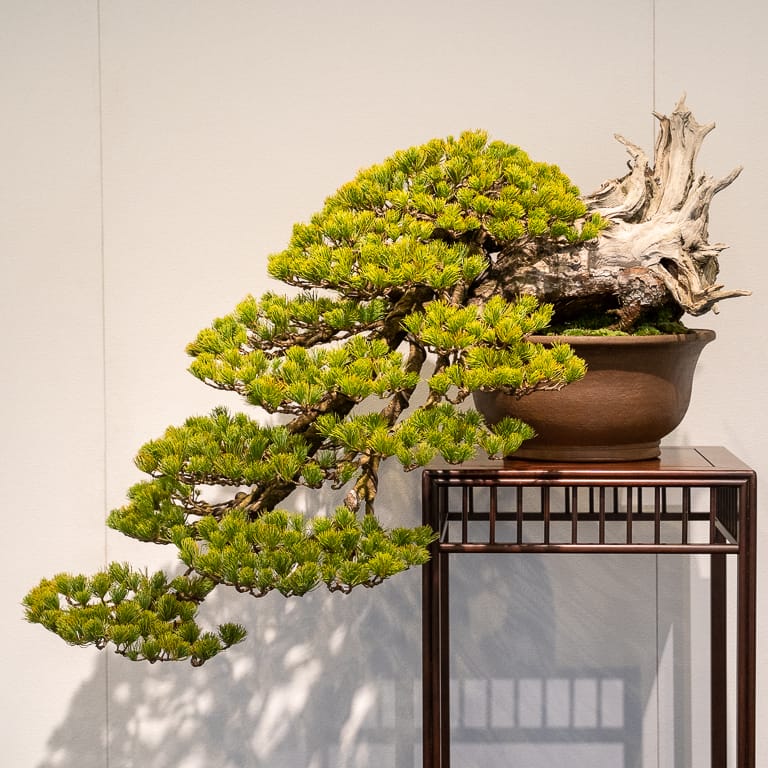
White pine that points to the left
(This and subsequent photos are from the 2020 Kokufu exhibition)
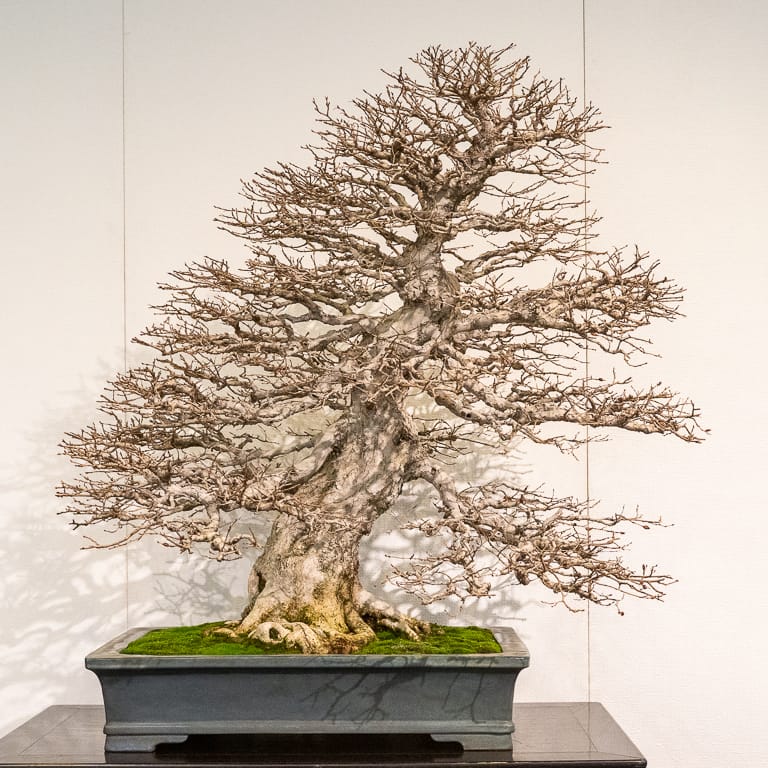
Korean hornbeam that slants to the right
There are a number of ways to indicate direction or flow in bonsai. In the above examples, the line of the trunk (from the base to the tip) strongly leads to one side (the pine to the left, the hornbeam to the right).
For deciduous trees displayed in winter, we can clearly see which way the trunk or trunks point.
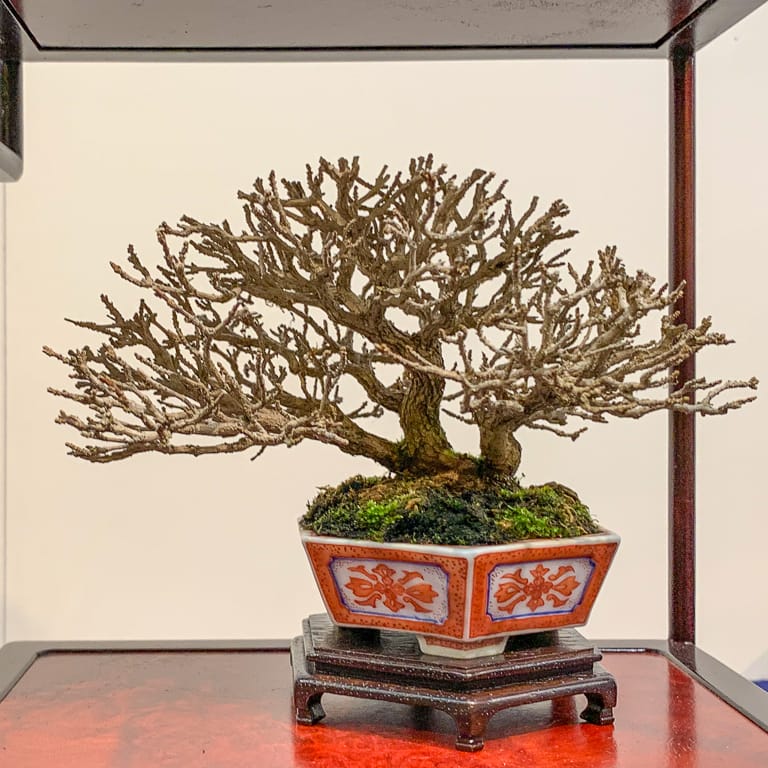
Premna – the main trunks point to the left
In cases where the trunk meanders from side to side – a common trait of informal upright bonsai – the top of the trunk can indicate direction.
The root over rock trident maple below doesn’t have strong directional movement, but the top third of the trunk points left. As a result, we say the tree points to the left.

Root over rock trident maple that points to the left
Other deciduous trees have virtually no indicators of movement in the trunk, silhouette, or branch structure. That’s the case for the broom style zelkova below.
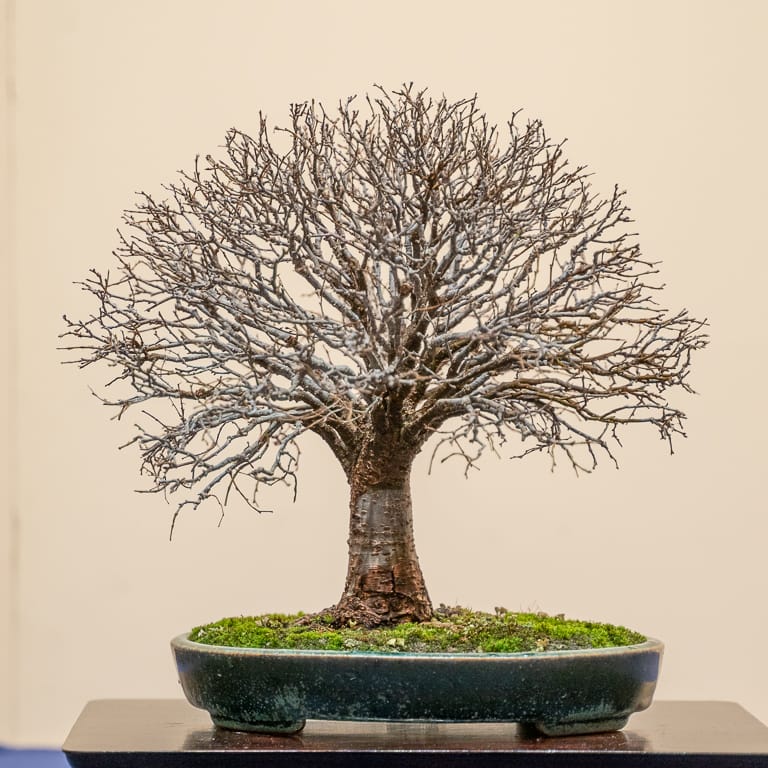
Zelkova – which way does the tree point?
In this case, the zelkova points to the right. The owner potted the tree on the left side of the pot which opens up space on the right.
Branch structure, the line of the trunk, and the silhouette are used to determine direction in conifers too. For trees with no visible structure, placing the bulk of the foliage to the left or the right can indicate direction.
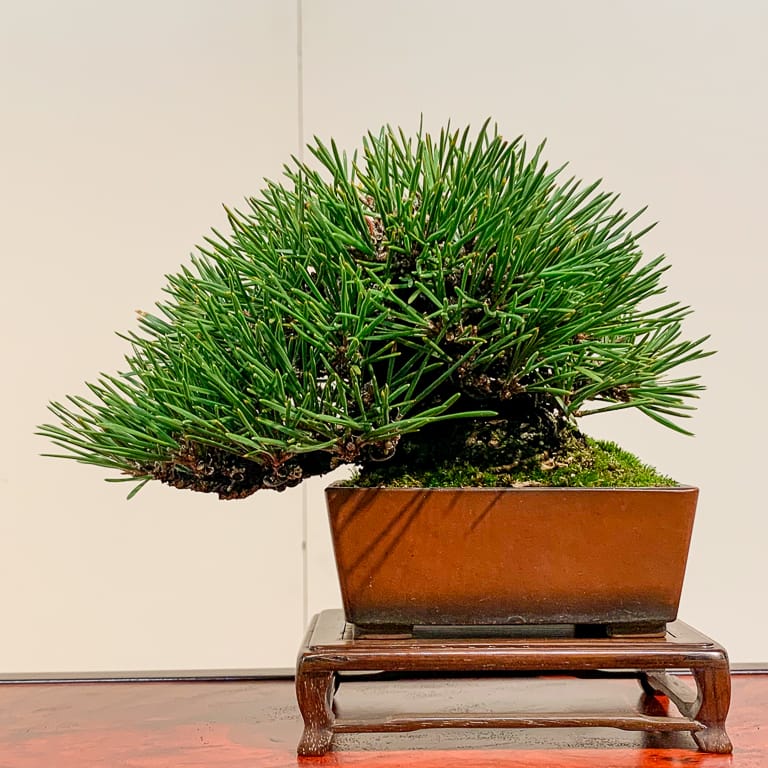
Black pine with more foliage on the left than on the right – the tree points to the left
A strong branch or branches can also indicate direction.
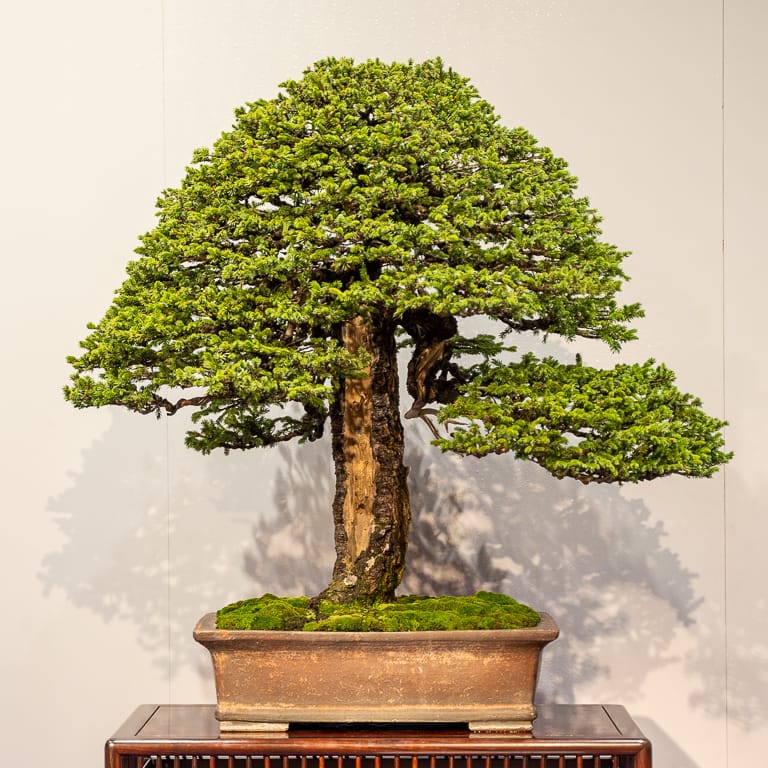
Ezo spruce with prominent branch that points right
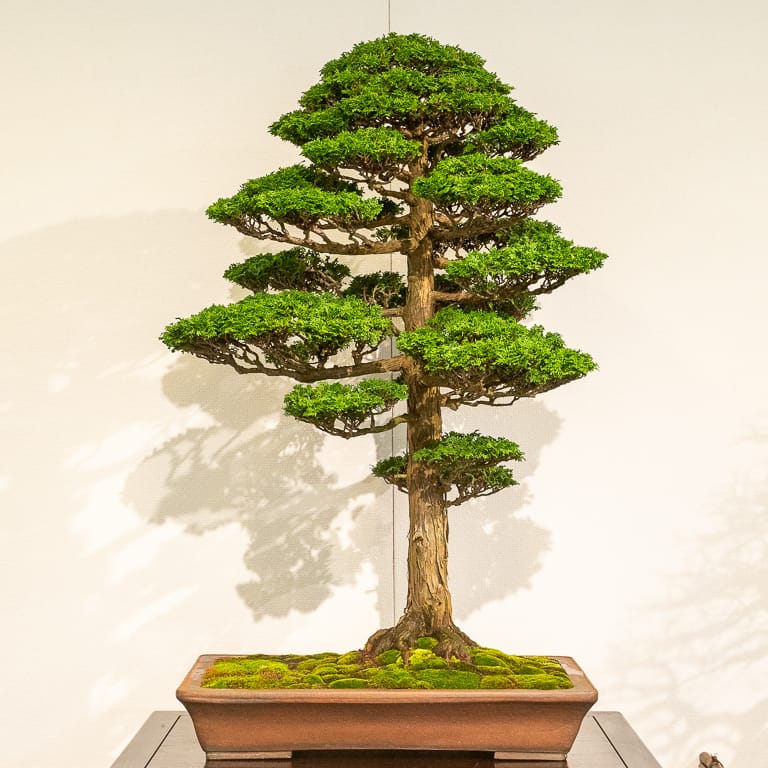
Formal upright hinoki with prominent branches that point left
When some aspects of a tree point left and others point right it can be hard to determine the overall flow. For the pine below, the lower section of the trunk and the most prominent branch move strongly to the left. The silhouette, however, points to the right.

Black pine
Together, the lower section of the trunk and the prominent branch on the left make a good case for the tree pointing left (which is how the tree was displayed, with the accent on the left).
Here’s a similar example. The trunk of the yew below starts left but moves overwhelmingly to the right from there. As a result, the tree points right.
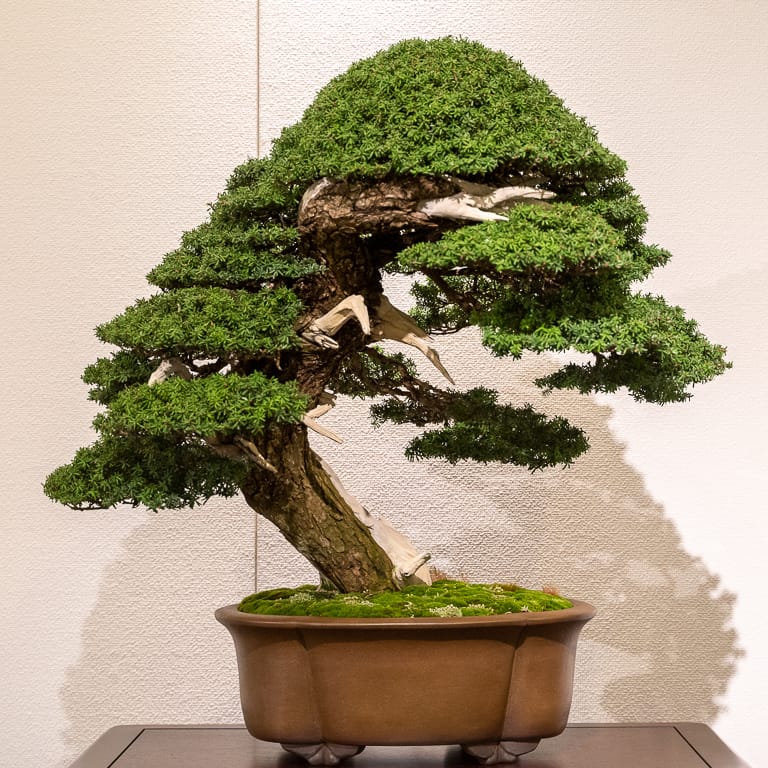
Japanese yew
Collected bonsai often have wild character that can lead in any number of directions. In these cases, we often rely on the foliar design to indicate direction.
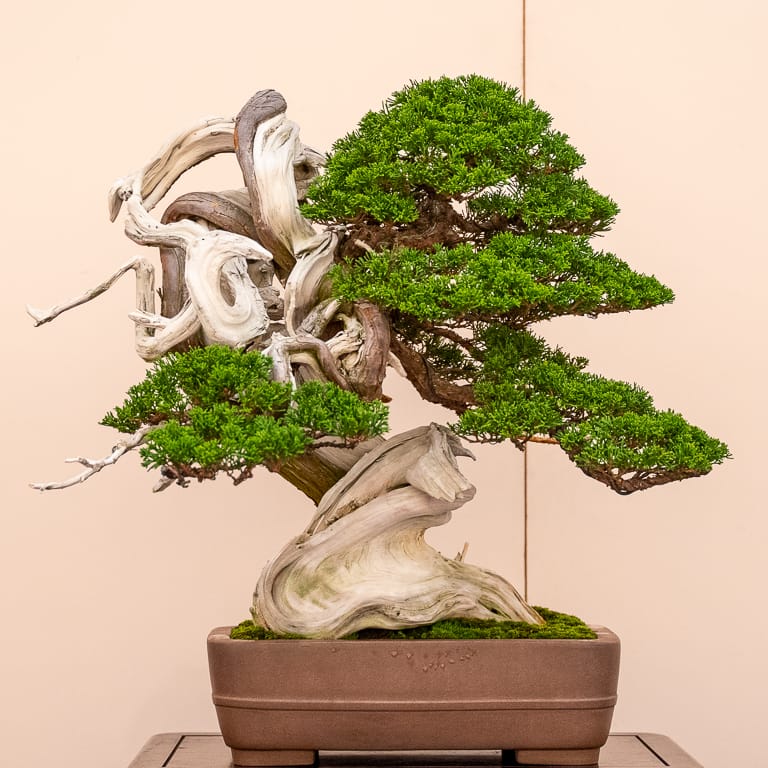
Shimpaku juniper that points right
The Kokufu prize-winning white pine below is a great example of conflicting directional cues. The apex is directly over the base of the trunk so there’s no inherent lean to the trunk.
The open canopy and pointy jin at lower right often suggest rightward movement, but the heavy foliage of the first branches on the left suggest leftward movement and ultimately lead the tree to point left.
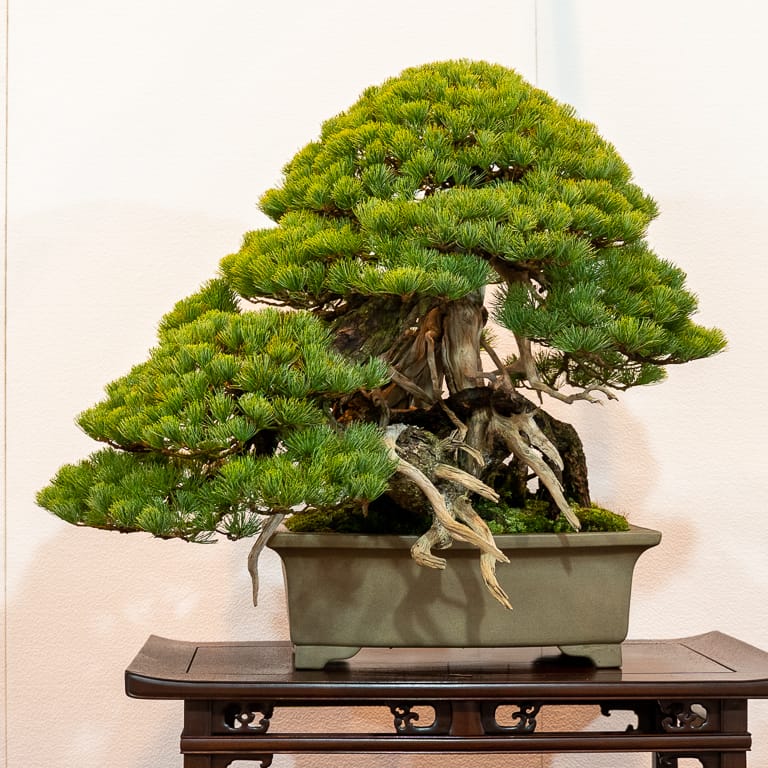
White pine that points left
Why focus on which way a tree points? One reason is to refine our design skills. If the flow of our trees is ambiguous, it may be an opportunity to make refinements that strengthen the flow in one direction or the other.
Determining flow is also a key aspect of bonsai display. Understanding which way a tree points, and how strongly it points, can help us set up displays that convey our artistic ideas. I’ll say more about display in future posts.
Subscribe to Indian Bonsai Art
New Posts Delivered Every Tuesday and Friday
